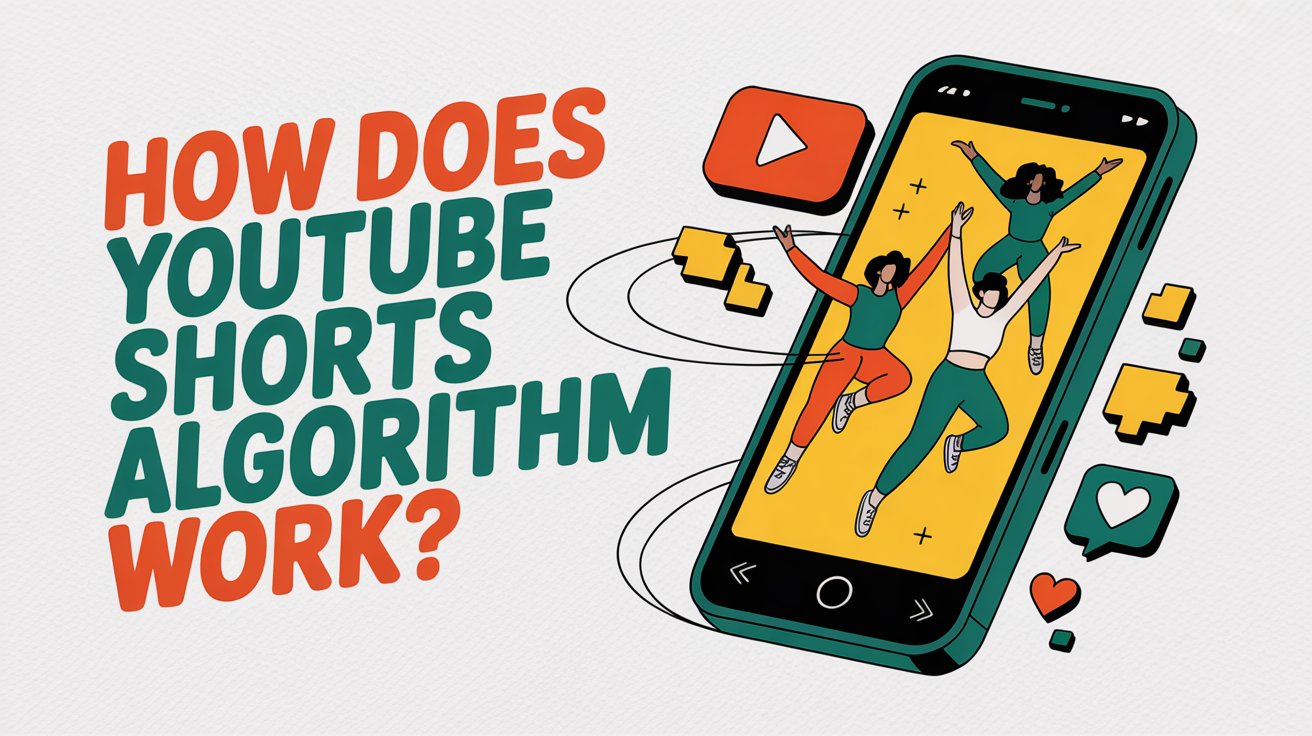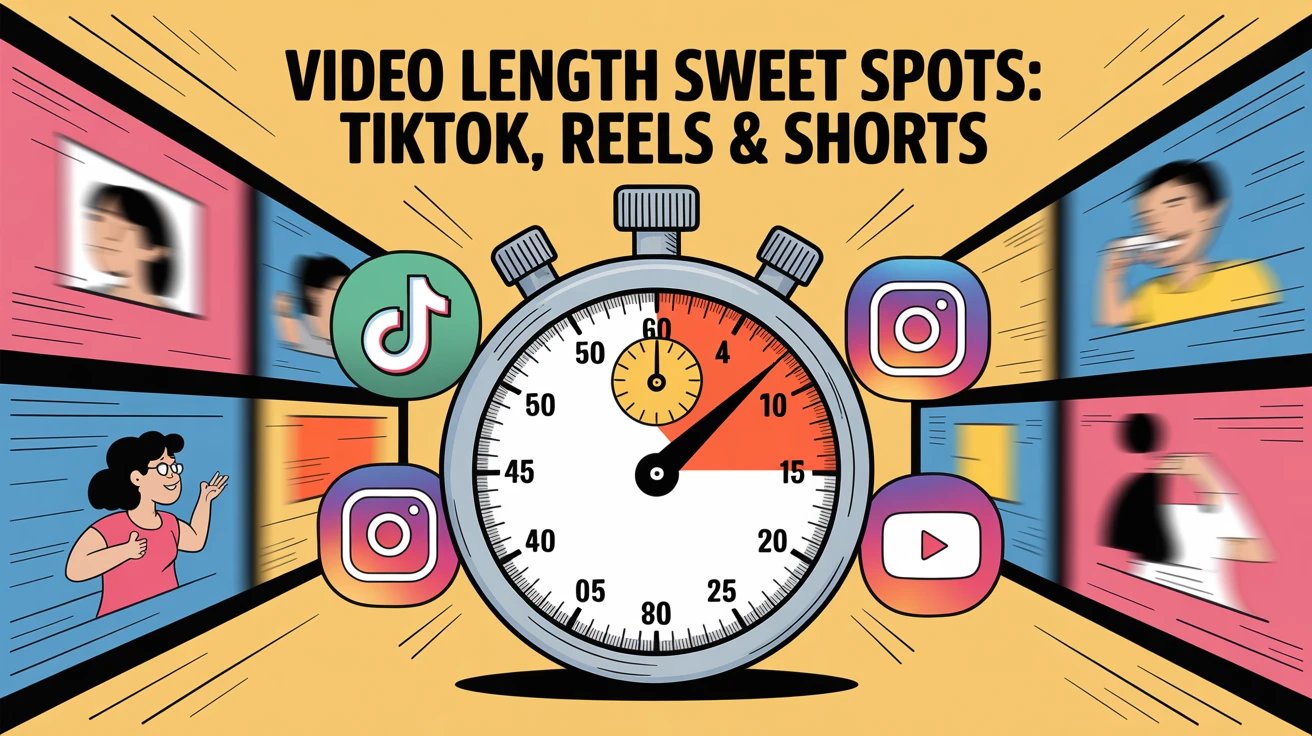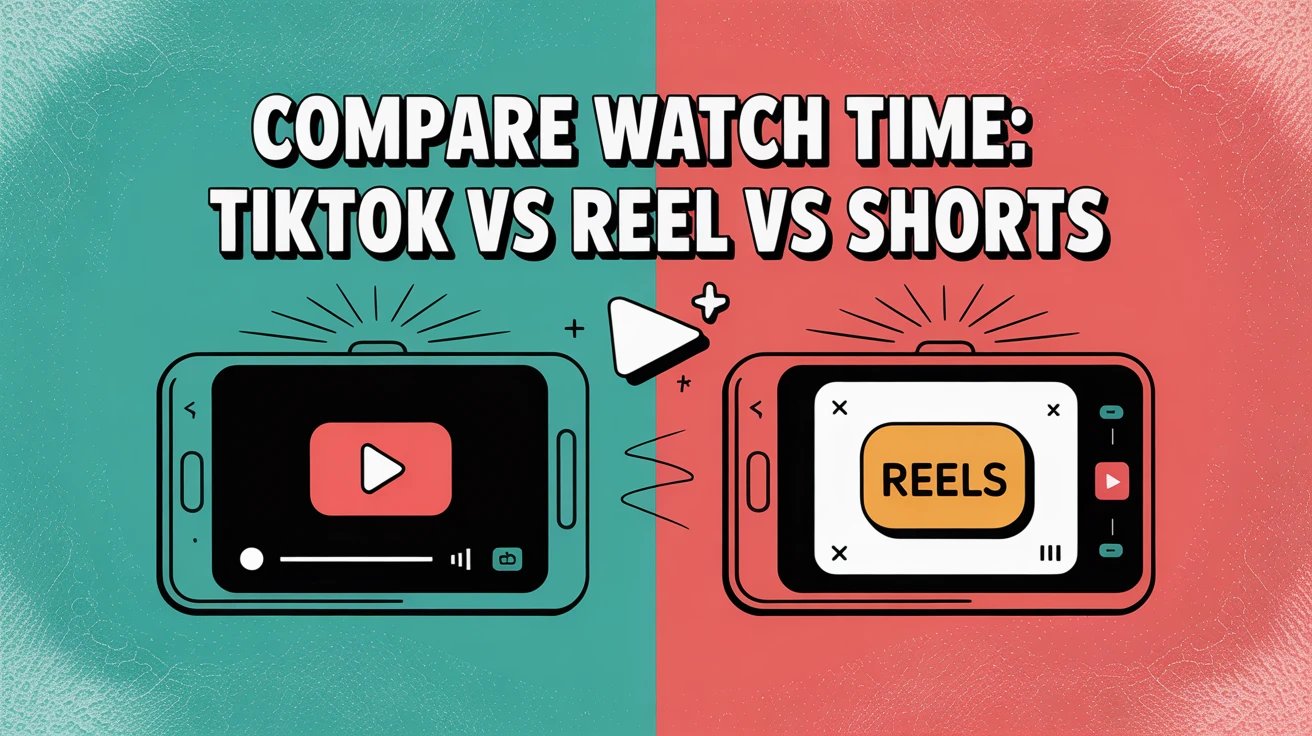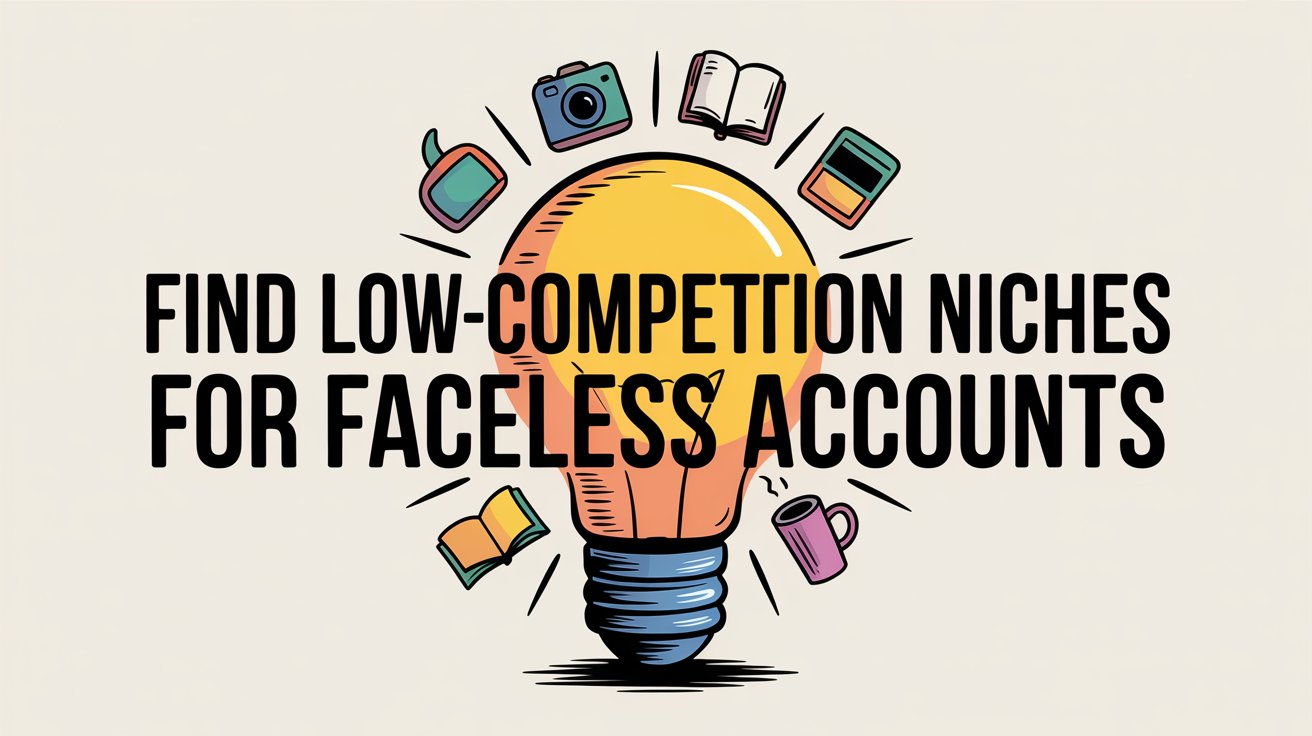YouTube Shorts just hit 200 billion daily views. That's not a typo. We're talking about billions of eyeballs scrolling through vertical videos every single day.
If you're creating Shorts and wondering why some blow up while others barely get seen, you're not alone. The algorithm feels like a black box sometimes. But most creators miss this: the YouTube Shorts algorithm isn't actually trying to confuse you. It has one clear goal, and once you understand it, everything else makes sense.
This guide breaks down exactly how the YouTube Shorts algorithm works in 2025. You'll learn what signals matter (spoiler: it's not what you think), how the recent changes affect your content, and the specific tactics top creators use to game the system ethically.
Whether you're posting your first Short or your thousandth, understanding these mechanics will change your approach. And if you're tracking performance across multiple platforms, we'll show you how Shortimize makes monitoring all these metrics infinitely easier.
What is the YouTube Shorts Algorithm and How Does It Work?
The YouTube Shorts algorithm is the recommendation system deciding which vertical videos to show each viewer. It's completely separate from YouTube's long-form algorithm, built specifically for videos up to 60 seconds (now extended to 3 minutes in 2025).
No two users see the same Shorts feed. The algorithm creates a personalized stream for every person based on what they've watched before, what they've liked, and what they've swiped past. It's hyper-customized.
The biggest difference from regular YouTube? Shorts are swipe-discovered, not click-discovered.
On regular YouTube, you see a thumbnail and title, then decide whether to click. With Shorts, there's nothing to click. The video just starts playing as soon as it appears.
This means traditional metrics like click-through rate (CTR) are completely irrelevant for Shorts. YouTube doesn't even track CTR in the Shorts feed because autoplay is the default.
Your content has to sell itself instantly. No thumbnail to tease them. No title to promise value. Just those first few frames.
Critical insight: The Shorts algorithm analyzes viewer behavior (watch time, swipes, engagement) and video performance to predict what each user will enjoy. It's optimizing for viewer satisfaction in a rapid-fire, swipeable format.
Think about it: when someone's scrolling Shorts, they'll see a video for maybe half a second before deciding to keep watching or swipe to the next one. The algorithm learns from every single one of those micro-decisions.
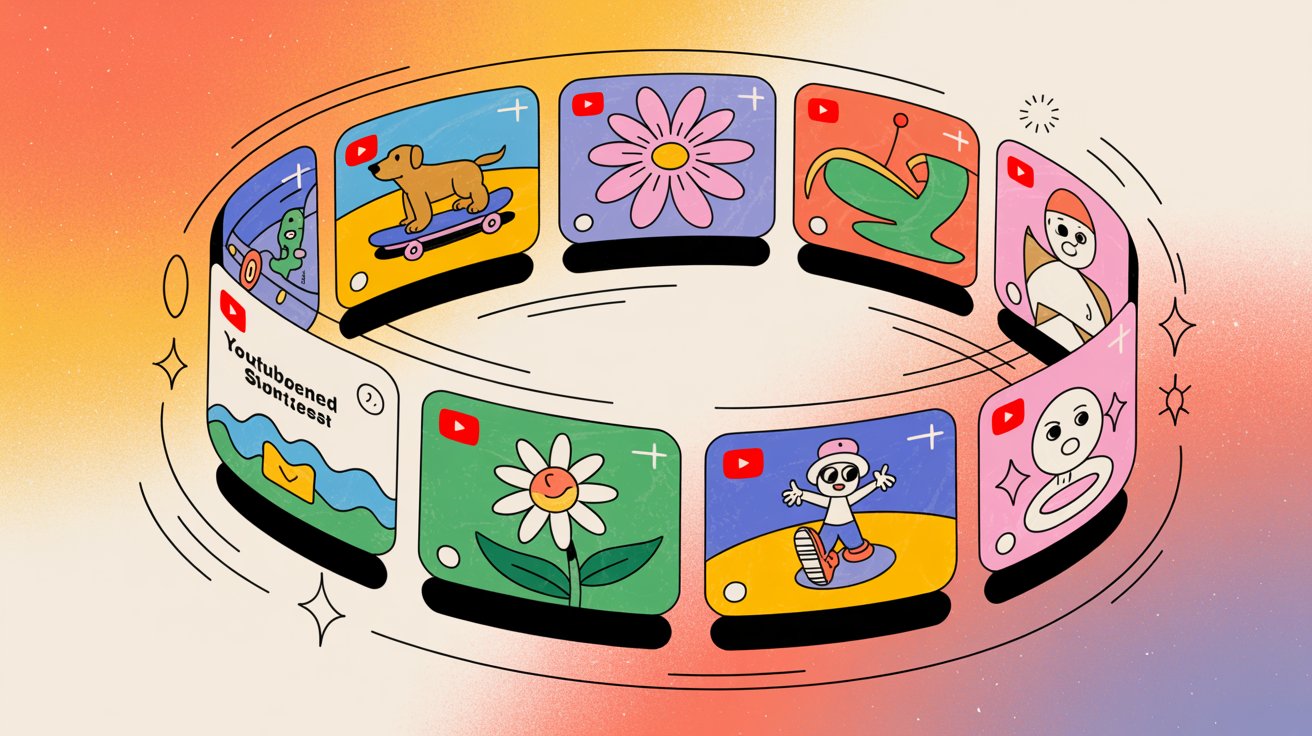
How Does the Youtube Shorts Algorithm Rank Videos?
Most creators think posting at the right time or having lots of subscribers matters for Shorts. They're wrong.
The algorithm uses a two-phase testing system that cares about one thing above all: how viewers react to your content.
When you upload a new Short, YouTube doesn't immediately blast it to millions of people. It runs an experiment.
How Youtube Tests New Shorts: The Explore and Exploit System
First, the algorithm "explores" by showing your Short to a small test audience. We're talking a few hundred to a few thousand viewers max. These initial viewers are usually people who've shown interest in similar content before.
This is your trial period. YouTube is asking: "Do people actually like this?"
If that seed audience watches most of your video, maybe rewatches it or likes it, the algorithm sees a green light. It then "exploits" that positive signal by pushing your Short to a much larger pool of viewers. This is when you see that sudden spike in views.
But if the initial test audience mostly swipes away? Your Short stalls out with minimal reach.
The explore-exploit pattern: You'll see a burst of views right after posting, then either exponential growth or… crickets. That initial performance determines everything.
Most people find this surprising: YouTube doesn't care how new your Short is.
Unlike some platforms where only recent content gets shown, the Shorts algorithm will happily recommend a video you posted three weeks ago if it suddenly finds the right audience. Plenty of Shorts go viral days or even months after upload. They plateau after the first push, then get rediscovered when the topic becomes trendy again or when new viewers show interest.
This means timing and upload frequency aren't direct ranking factors. According to YouTube's own statements, there's no magic "post at 5pm for maximum reach" rule. Each Short lives or dies by how people respond to it, not when you published it.
(Consistency still helps for other reasons, which we'll get to later.)
What Signals Does the Youtube Shorts Algorithm Track?
So what is the algorithm looking at during that test phase? What makes it decide to amplify your Short or let it fade?
Here are the key signals, ranked by importance:
Watch Duration & Completion Rate (This Is Everything)
Retention is king in Shorts. The algorithm heavily prioritizes how much of your video each viewer watches, because that's the clearest signal of interest.
High average view duration tells YouTube people are hooked. But it's not just about total seconds watched. The percentage of your video that gets watched matters more than the raw watch time.
Think about it:
• A 30-second Short where viewers watch 25 seconds (83% completion) = excellent signal
• A 60-second Short where viewers watch 20 seconds (33% completion) = terrible signal
Top-performing Shorts often hit 80-90% average completion rates. If you're consistently below 50%, the algorithm sees your content as skippable.
YouTube also notices when people watch your Short multiple times or let it loop. Replays signal strong interest. This is why some creators make Shorts that seamlessly loop back to the beginning (the ending connects to the opening frame). It racks up passive replays and boosts the replay metric.
Bottom line: Make your Shorts as tight as possible. Every second needs to earn its place. The closer you get to 100% completion, the more the algorithm favors you.
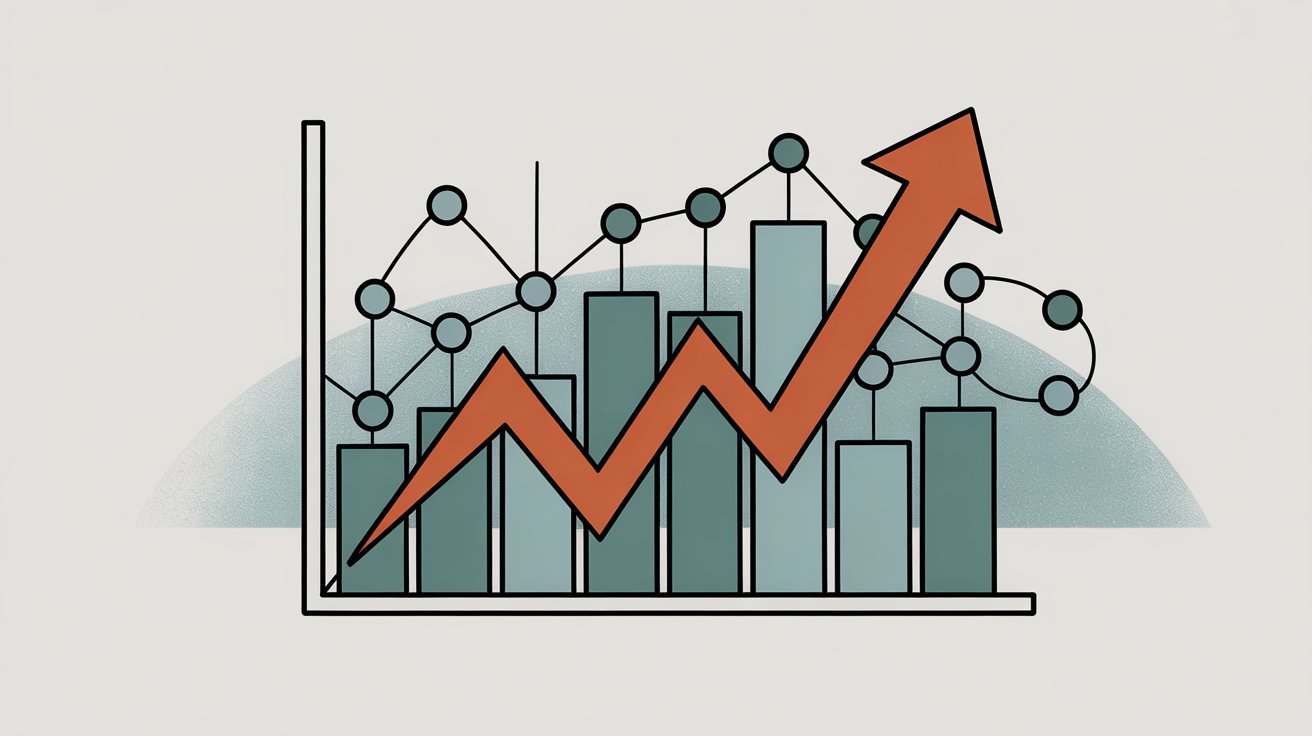
Viewed vs. Swiped-away Ratio (Your Hook Score)
In the Shorts feed, every impression ends one of two ways: either someone watches your video (even briefly), or they instantly swipe to skip it.
The algorithm tracks this as "viewed vs. swiped". What percentage of people who see your Short actually give it a chance?
This metric lives or dies in the first 1-2 seconds of your video. If 100 people encounter your Short and 80 watch it while 20 swipe immediately, that's an 80% view rate. Strong hook. If most people swipe without watching a single frame, that tells the system your opening isn't grabbing attention.
Top creators aim for roughly 75% or higher view rates. Anything below 50% means your hook is failing.
YouTube actually provides this metric in Analytics now. If you're seeing low "viewed vs swiped" numbers, it's a direct signal: fix your first two seconds.
Hook quality is so critical because unlike regular YouTube (where people choose to click based on title and thumbnail), Shorts viewers judge purely on those opening frames. If your first moment is boring, static, or unclear, they're gone before you can deliver value.
We'll cover specific hook tactics later, but for now: understand that this ratio is a make-or-break metric.

Engagement: Likes, Comments, Shares
Beyond just watching, the algorithm looks at active interactions. When viewers like your Short, leave a comment, share it with others, or subscribe from it, those are powerful signals that your content resonated.
High engagement relative to views suggests people didn't just watch, they cared. A Short with an unusually high like-to-view ratio or lots of comments (despite Shorts not naturally prompting as many comments as long videos) tells the system this content is valuable.
Shares are especially potent. If people are sending your Short to friends or across social media, that signals viral potential. Research shows Shorts with above-average share counts often reach exponentially wider audiences.
One thing to note: dislikes and "Not Interested" feedback hurt you. If your Short is getting lots of dislikes or people are actively flagging they don't want to see it, the algorithm will suppress it.
But most viewers who aren't interested just swipe away rather than actively disliking. So low watch time is typically a bigger problem than a few dislikes.
Creating content that makes people want to interact (whether that's liking, commenting, or sharing) greatly improves your algorithmic chances. We'll talk about encouraging engagement without being annoying in the tips section.
Viewer Personalization: Watch History & Interests
The algorithm isn't just evaluating your video. It's also matching content to the right viewers based on their behavior.
If someone's been watching cooking Shorts, the algorithm prioritizes showing them more food content. If another user only watches gaming highlights, their feed will be full of gaming. YouTube uses each viewer's watch history, likes, and preferences to decide what Shorts to serve.
This means a great Short still won't blow up if it's constantly shown to the wrong audience. The matchmaking matters.
The algorithm looks at patterns like:
• What categories of Shorts has this person watched recently?
• Which creators do they follow or engage with?
• Do they tend to watch comedy to the end but swipe past dance videos?
These signals feed into personalized recommendations. As a creator, you benefit when your video is clearly understood by the algorithm so it can find viewers most likely to enjoy it.
Good news: You don't need subscribers to get views on Shorts. Many users will be shown content from channels they've never heard of if the video aligns with their interests. Shorts are a huge discovery vehicle. The algorithm often introduces new audiences to creators based on topic and viewing patterns.
This is why creating content for a clear niche or trend improves your chances. The algorithm can confidently recommend your Short to people who love that kind of content.
Content Topic & Metadata: What Your Short Is About
YouTube does parse what your Short is actually about. Things like title, description, hashtags, and the actual visuals help the algorithm categorize your content.
While Shorts are primarily driven by behavioral signals (how viewers react), relevance to trends and topics can boost a video. Tying your Short to a currently trending topic or using popular music helps if that trend is hot.
Proper metadata (titles, descriptions, hashtags) helps the algorithm understand and match your Short to interested users. For example, adding a hashtag like #FitnessHack or #CookingTip if relevant gives the system context. You don't need to stuff keywords, but be precise and truthful about what your content delivers.
Topic relevancy also matters for timing. Shorts related to seasonal events or current news might see temporary boosts. YouTube's algorithm can resurface older content when a topic becomes newly relevant. So a Short about a sports moment could spike again during the next tournament.
That said, plenty of random Shorts go viral on pure entertainment value without any trend alignment. Consider trends as a bonus factor, not a requirement.
Balance trending topics with your channel's niche. The algorithm might boost trend-hijacking content short-term, but consistent audience interest comes from delivering on a theme viewers stick around for.
Consistency and Channel Activity: More Shots at Success
YouTube says each Short is evaluated independently. The algorithm doesn't automatically boost your tenth Short just because you posted nine before it.
But in practice, creators who post Shorts frequently and consistently see more overall success. Why?
Simple math: more videos mean more chances one takes off.
There's evidence it can take dozens or even a couple hundred Shorts to really dial in your content and for the algorithm to recognize your style and audience. Studies show channels with at least 200 Shorts posted saw more consistent view growth over time.
Consistency also keeps your channel active with fresh content. When viewers discover you, they have more to watch (and a reason to subscribe).
Upload frequency helps, but it's not a ranking boost per video. Posting at least weekly is recommended to stay present in the algorithm. Just avoid spammy behavior. Quality still matters more than quantity.
Think of frequency as increasing your sample size for hits. Each piece of content still lives or dies by its own performance. The algorithm won't promote low-retention videos just because you upload daily.
Content Variety for Viewers: No Back-to-back Spam
One interesting quirk: the Shorts feed generally won't show a user two or three of your videos in a row. YouTube's system likes to mix up creators to keep the experience varied.
Even if someone loves your Short and watches it fully, the next swipe might show another creator's content rather than immediately serving a second one from you.
The algorithm tries not to flood users with one channel's content back-to-back. This means each Short you make largely competes independently, not riding on the coattails of your last Short in that session.
If a viewer enjoys your content (high watch time, engagement, maybe a follow), your future Shorts are more likely to appear for that person eventually. Just spaced out.
This is why many creators diversify their content or create series. If someone finds one Short interesting, they might click through to your channel to watch more directly rather than waiting for the algorithm to show them another.
The Shorts algorithm is user-centric, not channel-centric, in how it sequences videos for each viewer. Variety in the feed is by design.
Quality & Policy Compliance: Don't Get Throttled
While not a direct ranking signal, Shorts still need to follow YouTube's content guidelines. Videos that are low-resolution, have terrible audio, or feature watermarks from other platforms might not be formally penalized, but they hurt viewer retention.
(For example, a TikTok watermark might turn some viewers off, causing them to swipe. Instagram Reels discourages this too.)
In 2023, YouTube indicated that re-uploaded content with visible logos from other platforms may be algorithmically de-emphasized to encourage original content. It's not a hard rule, but it can impact performance.
The same goes for content that skirts policy. If a Short gets age-restricted or demonetized for guideline violations, it probably won't be widely distributed.
From an algorithmic perspective, "quality" = how viewers react. But you should ensure technical quality (clear video, good audio) and no community guideline violations to avoid hidden throttling.
How the Algorithm Tests and Scales Your Short
According to YouTube VP Todd Sherman, because viewers don't actively choose Shorts (no click involved), the system aggressively tests a Short with lots of impressions to gauge quality.
If the signals are good (high retention, lots of engagement, low swipe-away rate), views snowball. If signals are weak, impressions dry up fast.
This is why you often see:
① Initial burst (explore phase: 500-5,000 views)
② Hockey stick growth (exploit phase: 50K-500K+ views) or immediate plateau
The algorithm is ruthless about promoting what works and burying what doesn't. Your job as a creator is to give it content that passes that initial test.
What Changed in the Youtube Shorts Algorithm in 2025?
The core principles of the Shorts algorithm have stayed consistent since launch in 2021, but YouTube introduced some notable updates recently. What's different in 2025:
How Youtube Counts Shorts Views Changed in 2025
This is the biggest shift. Previously, a "view" only registered if someone watched a Short for a few seconds. As of March 31, 2025, any playback of any duration counts as a view. Even if a user scrolls past after a split second, that's a view.
Also, each loop/replay of a Short now counts as another view.
Why the change? YouTube wanted to align with platforms like TikTok and Instagram Reels, where any start equals a view.
Immediate effect: Raw view totals jumped overnight. Some creators saw 30% increases in view counts after this update.
But there's a catch: YouTube introduced the concept of "Engaged Views" to complement the inflated numbers. Engaged views are those where the viewer actually watched beyond a brief instant or interacted with the video.
|
Metric |
Old Definition (Pre-March 2025) |
New Definition (Post-March 2025) |
|---|---|---|
|
View |
Required a few seconds of watch time |
Any playback of any duration counts |
|
Loop/Replay |
Didn’t count as separate view |
Each loop = additional view |
|
Engaged View |
Not tracked separately |
New metric: actual watch time or interaction |
|
Impact |
Lower raw view counts |
30%+ increase in total views |
Engaged view count is critical because YouTube uses it for monetization eligibility. Shorts ad revenue sharing and YPP requirements count engaged views, not all views.
From an algorithmic standpoint, this update doesn't change how videos are recommended. A skip is still a skip. But creators should be mindful: don't get lulled by big view numbers if those views aren't translating to completion or engagement.
Focus on the ratio of engaged views or "viewed vs swiped" metrics for true performance measurement. The algorithm still prioritizes retention and satisfaction, not just firing off videos to rack up views.
How Monetization Affects the Shorts Algorithm
In early 2023, YouTube rolled out ad revenue sharing for Shorts through the YouTube Partner Program. Creators over certain thresholds now earn a share of ad revenue from Shorts views.
Importantly, Shorts watch time doesn't count toward the 4,000-hour watch-time requirement for long-form monetization eligibility. YouTube kept Shorts separate for YPP. There's a different threshold (like 10M Shorts views in 90 days) for qualifying via Shorts.
But subscribers gained from Shorts do count toward your subscriber threshold.
The algorithm itself wasn't fundamentally changed by monetization, but YouTube's investment in rewarding quality Shorts suggests it's working to make them more discoverable (to show more ads). One consequence: the algorithm may indirectly favor content that keeps people in the Shorts feed longer.
Also worth noting: YouTube tweaked the system so viewers watching your Shorts might be more likely to get recommended your long-form videos in their regular feed (if they show interest). This cross-pollination helps Shorts act as a funnel to long-form content, though it's still primarily user-driven.
As far as ranking within the Shorts feed, monetization doesn't play a role. A non-monetized creator's Short can outrank a monetized one purely on engagement signals.
Can YouTube Shorts Be 3 Minutes Long Now?
Initially, Shorts were capped at 60 seconds. In 2025, YouTube expanded the limit to up to 3 minutes for Shorts.
This blurs the line between short-form and long-form a bit, but from an algorithm perspective, it means more creative flexibility.
The catch? The algorithm still favors high completion rates. A 2-minute Short where viewers watch 90% (1:48) could perform great. But a 3-minute Short where most drop off after 45 seconds will struggle.
You can't assume viewers will stick around for 180 seconds unless you're delivering constant value. The first seconds still decide if someone gives it a chance. Many successful Shorts remain in the 15-60 second range.
The longer the Short, the harder it is to maintain high retention percentage. The algorithm won't give you a pass just because you used 3 minutes. If anything, longer Shorts amplify the importance of compelling content all the way through.
What Hasn't Changed in the Shorts Algorithm?
YouTube continuously A/B tests its recommendation systems. While there hasn't been a major Shorts algorithm overhaul announced in 2025, the system has broadly remained the same shape even as it evolves in detail.
YouTube might adjust weightings on factors like shares vs. likes, or how much one user's negative feedback affects reach. They also introduced new analytics for creators like the swipe-away metric, indicating those signals are actively used.
One notable tweak from 2022-2023 was addressing the linkage between Shorts and long-form. Initially, Shorts views didn't translate to long-form channel growth. YouTube updated discovery to better connect those dots, though it's still user-driven.
Another area of refinement: diversity and freshness. The system ensures users don't see the same videos repeated too often. If your Short gets a burst of views, then nothing, then another burst weeks later, that's the algorithm cycling content to new people.
Bottom line: If you're consistently making engaging Shorts that people watch and enjoy, algorithm tweaks shouldn't hurt you. They'll likely help over time.
How to Optimize YouTube Shorts for the Algorithm (5 Proven Strategies)
Understanding the algorithm is half the battle. Now let's talk about how to actually use this knowledge when creating content.
These five tactics are battle-tested strategies for making the algorithm work in your favor:
① How to Hook Viewers in the First 2 Seconds
In the swipeable Shorts environment, you literally have one or two seconds to capture attention before a viewer scrolls on.
Make the beginning of your Short as punchy as possible. This could mean:
→ Starting with a visually striking shot
→ A bold statement or question
→ A surprise element
→ Rapid cuts that create energy
→ Showing the payoff/result first, then explaining how
Remember, for Shorts the opening frame is essentially your thumbnail and title combined. There's no clicked title or custom thumbnail to entice people. The content itself must hook immediately.
Avoid long intros, logos, greetings, or slow build-ups. Instead of "Hi guys, today I want to talk about…" (which wastes precious seconds), jump straight into action.
Example: If you're doing a cooking Short ("How to make the perfect omelette in 30 seconds"), start with the sizzling finished omelette on the pan and a caption: "Perfect fluffy omelette in 30s. Here's how." Viewers are instantly intrigued by the outcome and want to see the process.
The importance of a strong hook can't be overstated. A great video that starts weak will be skipped, and the algorithm will never know its greatness.
If you consistently see low "viewed vs swiped" percentages in your analytics (under 50%), focus on reworking your intros. Sometimes cutting just half a second of dull opening can boost retention dramatically.
Don't be afraid to A/B test different hooks for similar content to learn what grabs your specific audience. Tools like Shortimize can help you track which hook styles perform best across your entire channel.
② How to Maximize Watch Time and Retention
Beyond the hook, you need to sustain interest through your Short's entire duration.
Retention (average percentage viewed) is the king metric, so design your content to avoid drop-offs.
Strategies to improve retention:
a) Pace and energy: Keep things moving. Rapid cuts, lively narration, or advancing the story every second. Dead air or static shots invite boredom.
b) Avoid filler: In a 30-second Short, every second counts. Edit out anything not contributing to the core idea or entertainment.
c) Use pattern interrupts: Change something every few seconds to re-engage viewers. Angle shifts, scene changes, text overlays, zooms. Many successful Shorts have a cut or visual change every 2-3 seconds to reset attention.
d) Tease and payoff: Create a mini-story. Set up a question or mystery at the start ("Wait for it… you won't believe what happens under UV light") and reveal the answer at the end. This encourages viewers to stay till the finish. But don't drag it out so long they lose interest halfway.
e) Loop seamlessly: Make your video loop so the ending connects to the beginning. This can lead viewers who watched fully to inadvertently watch again, boosting replays.
Always check your audience retention graph in YouTube Analytics for each Short. Look for drop-off points. Was there a boring part? A long pause? Use that insight to refine future videos.
Top Shorts creators shoot for at least 80-90% average percent viewed on videos under a minute. If you're making 3-minute Shorts, realistically retention might be lower, but aim well above 50%.
High retention tells YouTube viewers loved the content. End of story.
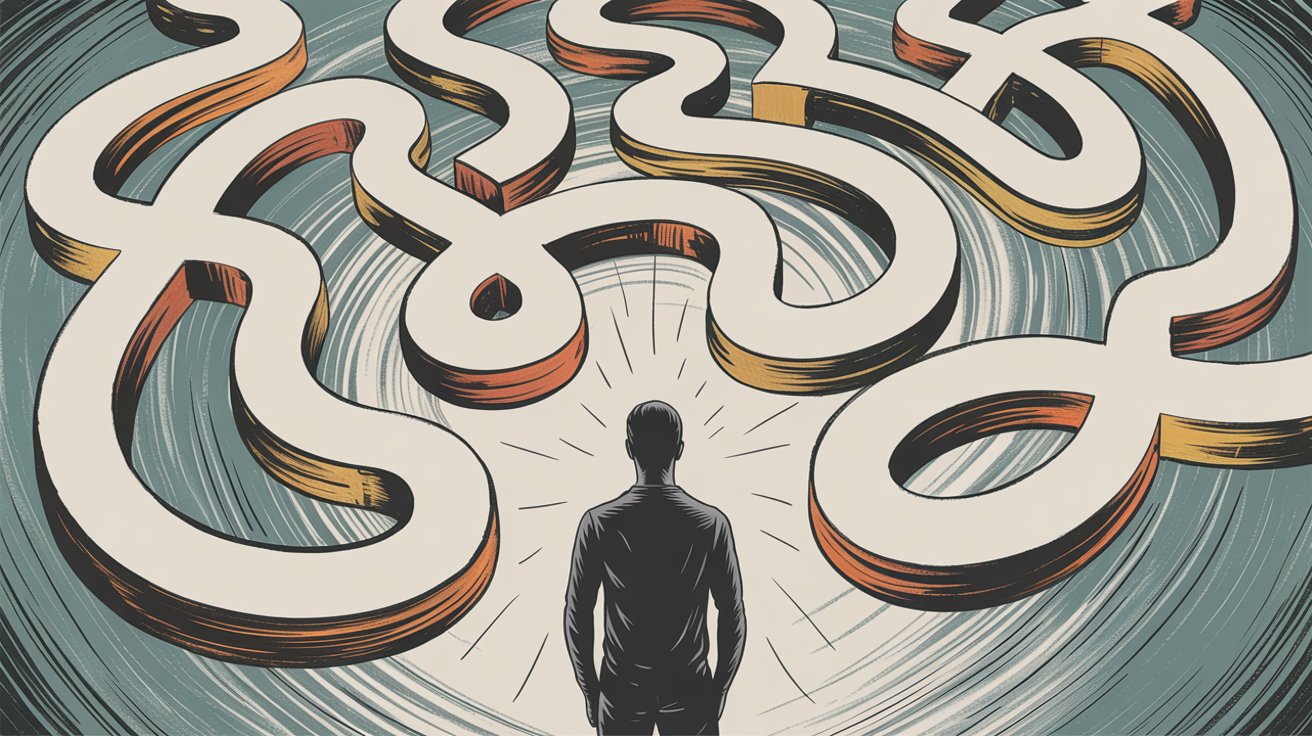
③ How to Use Trending Topics Without Losing Authenticity
Riding trending topics can give your Shorts a boost (if you do it right).
The Shorts algorithm does respond when a video is timely or related to popular trends because more viewers are likely to engage.
Ways to tap into trends:
• Use trending music or sounds (YouTube's Shorts library highlights popular audio)
• Participate in viral challenges or memes (in your own way)
• Include relevant hashtags for current trends
Ensure it fits your content niche, though. Don't force a trend that doesn't align with your brand or audience, or you risk attracting the wrong viewers who'll swipe away.
For example, if you run a finance tips channel and a silly dance is trending, doing that dance might get views but not from people who'd subscribe for finance content. Better: use a trending audio where you overlay finance-related insight or humor.
Also use your title and description to give context. While viewers might not see a long description in the feed, YouTube's system reads it. Include synonyms or related terms to help the video be recommended appropriately.
For instance, if your Short is a quick recipe, mentioning "easy recipe, 15-minute dinner, cooking hack" in the description helps ensure it's served to food lovers.
Be truthful and precise. Mislabeling or clickbait might get an initial spike but backfires when viewers abandon (and then the algorithm drops it).
Summary: Tap into what's trending for a potential boost, but do so in a way that's relevant to your audience and content style. This ensures when the algorithm shows your trending Short, viewers will actually watch it.
④ How to Increase Likes, Comments, and Shares
We know the algorithm values likes, comments, shares, and subscribes. While great content should naturally prompt these, you can still gently nudge viewers toward interacting.
Effective techniques:
a) Ask a question. Using on-screen text or voiceover, pose a question related to your video that invites comments.
Example: After showing a life hack, add "Would you try this? Let me know 👇" or in a comparison video: "Which was better, option 1 or 2? Comment below!"
b) Subtle CTA for likes. Make it fun: "Like if you learned something new!" or "Double-tap if this made you laugh."
Don't be needy about it. Tie it to the content ("Hit the 👍 if you agree with this take").
c) Incentivize shares or follows. Promise value: "Follow for more quick recipes daily" at the end can convert interested viewers into subscribers. Or "Share this with a friend who needs to see it" reminds people to hit share if the content is relatable.
d) Use YouTube's interactive features. You can reply to comments with a Short (if someone asks a question, make a response video). This not only engages that user but creates new content that might appeal to others with the same question.
Remember, higher engagement ratios give the algorithm confidence that your Short is appreciated, not just passively consumed.
Always deliver value first (entertainment, information, emotion), then encourage engagement if viewers got that value.
Bonus tip: If you're getting comments, respond to them. This doesn't directly impact the algorithm, but it builds community. Engaged viewers who feel connected are more likely to watch and interact with future Shorts, which does help algorithmically.
⑤ Why Consistency Matters for the Shorts Algorithm
Consistency is your friend in building momentum with Shorts.
Set a realistic schedule (e.g., 3-5 Shorts per week or 1 per day if you can manage) and stick to it for a few months. This gives you enough data to see patterns. Maybe certain topics or formats get better retention. It also trains the algorithm that your channel is an active source of content in your niche.
There's anecdotal evidence that after a threshold (your first 100 Shorts), things often pick up as you've refined your craft and the platform has found audiences for you.
The key is patience. Not every Short will be a hit. Many will flounder. But learn from each one.
If one video out of 10 suddenly got 500K views while others got 5K, dissect why. Was it the topic? The pacing? The hook? Use that insight.
At the same time, don't rigidly chase only what worked once. The algorithm can be fickle. Aim for a balance of iterating on successful formulas and introducing fresh ideas.
Consistency also applies to your content style and niche. If today you post a sports highlight, tomorrow a political rant, next day a cooking tip, the algorithm (and viewers) will struggle to understand what you're about.
Successful Shorts creators often have a clear theme or format that becomes their signature. This helps the algorithm confidently recommend your new Shorts to people who liked similar ones before. It helps viewers know why they should follow you.
Don't get discouraged by lulls. It's common to have a big hit then a couple duds. Shorts traffic can be spiky. The worst reaction is giving up or drastically changing directions at the first dip.
Keep a steady output and focus on the long-term trend in your metrics. If your average views per Short and follower count are rising month over month, you're on the right track.
How to Track Youtube Shorts Performance Across All Platforms
Understanding the algorithm is only useful if you can actually measure what's working.
YouTube Analytics gives you some data, but if you're creating Shorts across multiple platforms (TikTok, Instagram Reels, YouTube), tracking everything becomes a nightmare. You're switching between three different dashboards, manually comparing numbers, and probably missing patterns that could 10x your reach.
The Cross-Platform Tracking Problem
Most creators and growth teams face this:
• Scattered data: TikTok analytics are in one place, Instagram in another, YouTube in a third
• No unified view: Hard to compare which platform is performing better for the same content
• Time-consuming manual work: Exporting CSVs, building spreadsheets, constantly refreshing tabs
• Missing insights: You can't easily spot which topics, formats, or posting times work best across platforms
If you're managing multiple accounts or tracking hundreds of videos, this becomes impossible to do manually.
How Shortimize Solves This
Shortimize is built specifically for tracking short-form video performance across TikTok, Instagram Reels, and YouTube Shorts (all in one dashboard).
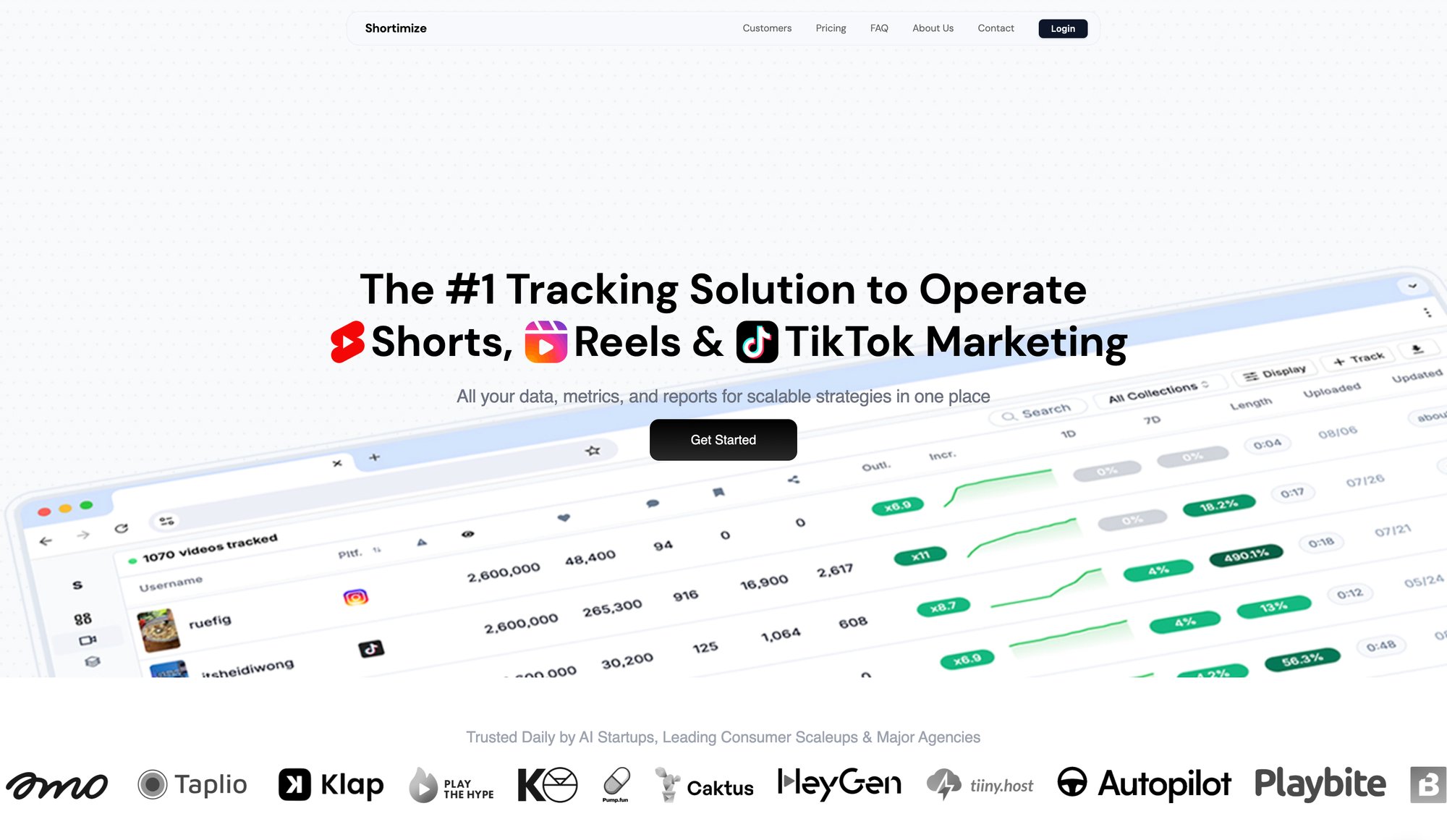
What makes it the go-to tool for serious Shorts creators:
Cross-platform tracking in one place: Just paste a URL or handle for any public account, and Shortimize automatically collects and updates performance data. Track all your content (and your competitors') without switching apps.
The metrics that actually matter:
|
Metric |
What It Measures |
Why It Matters |
|---|---|---|
|
View counts and engaged views |
Total vs. meaningful views |
Critical post-March 2025 view counting change |
|
Retention percentages |
Where viewers drop off |
Algorithm’s #1 ranking signal |
|
Viewed vs swiped ratios |
Hook effectiveness score |
Determines if your first 2 seconds work |
|
Engagement rates |
Likes, comments, shares in context |
Signals content resonance |
|
Posting cadence |
Upload frequency patterns |
Optimization for consistency |
|
Video length patterns |
Optimal duration sweet spots |
Balance retention vs. value delivery |
|
Virality indicators |
Median metrics + outlier detection |
Spot your top performers instantly |
Collections for organization: Running multiple accounts or tracking competitors? Organize them into Collections and compare performance side-by-side. You can track 1,000 videos on the Pro plan or 5,000+ on the Business plan.
Automatic refresh cycles: Data updates every 12-24 hours depending on your plan, so you're always working with current numbers without manual refreshes.
Team collaboration: Add team members, share insights, export data for reports. Perfect for agencies and growth teams managing multiple creators.
Real Creator Results
Shortimize customers like Amo, Airbuds, and Reclip use it as their "single source of truth" for tracking all short-form content.
Amo (which raised $20M) calls it the "easiest way to track all content produced across brand, ghost, and creator accounts."
Airbuds (App Store top-10) cites the speed and efficiency of being able to monitor everything in one place.
Reclip's CEO specifically credits Shortimize with simplifying their entire multi-platform tracking workflow.
Try It Free for 7 Days
Stop juggling three platforms. Start making data-driven decisions about your Shorts strategy.
Shortimize offers a 7-day free trial on all plans. No credit card required to start tracking.
See which Shorts are actually working. Spot the patterns. Scale what's winning.
YouTube Shorts Algorithm Faqs (Quick Answers)
Does Posting Time Affect the Shorts Algorithm?
No. According to YouTube, timing and upload frequency aren't direct ranking factors. The algorithm doesn't automatically boost videos posted at specific times. Each Short is evaluated based on how viewers respond to it, not when it was published.
That said, you might consider when your specific audience is most active (for initial engagement), but there's no universal "best time to post" for algorithmic reach.
How Many Shorts Should I Post per Week?
There's no magic number, but posting at least weekly is recommended to stay active in the algorithm. Many successful creators post 3-7 Shorts per week.
More uploads increase your chances of creating a hit, but quality still matters more than quantity. Don't sacrifice retention and engagement just to hit a posting quota. Channels with 200+ Shorts tend to see more consistent momentum, but that's about sample size and refinement, not algorithmic favoritism.
Do I Need a Lot of Subscribers for Shorts to Perform Well?
Not at all. The Shorts algorithm is discovery-focused. It regularly shows content from creators with zero subscribers to users who've never heard of them, as long as the video aligns with their interests.
In fact, Shorts are one of the best ways to build subscribers. The algorithm introduces your content to new audiences based on topic and viewing patterns, not channel size.
Subscriber count can help (subscribers might see your Shorts more often), but performance is what drives reach, not how many people already follow you.
Why Did My Short Suddenly Stop Getting Views?
Most likely, the explore phase ended and the initial test audience didn't engage strongly enough for the algorithm to expand distribution.
Remember the two-phase system: YouTube shows your Short to a small group first. If that group mostly swipes away or doesn't watch much, the algorithm decides the content isn't resonating and stops pushing it.
Your Short can also resurface later if it becomes relevant again or finds a new audience. Shorts aren't strictly chronological, so older videos can still go viral weeks or months after upload.
If this keeps happening, focus on improving your hook (first 2 seconds) and overall retention.
How Long Should My Shorts Be for Best Performance?
The sweet spot is usually 15-60 seconds. While YouTube now allows up to 3 minutes, shorter Shorts are generally easier to maintain high completion rates on.
Remember, the algorithm cares more about percentage watched than total watch time. A 20-second Short where people watch 90% (18 seconds) will outperform a 2-minute Short where people only watch 30%.
If you can deliver your value in 15-30 seconds, do it. Don't artificially extend your video. Every second needs to earn its place.
Can Old Shorts Still Go Viral?
Yes! The algorithm doesn't rank Shorts based on upload date. Your Shorts can get discovered days, weeks, or even months after you post them.
Many creators see Shorts plateau after the initial push, then suddenly spike again when the topic becomes trending or the algorithm finds a new batch of interested viewers.
This long-tail potential is unique to YouTube. Keep creating, and don't give up on older content. It might find its audience eventually.
How Do I Track My "Viewed Vs Swiped" Ratio?
YouTube provides this metric in your Shorts analytics. Go to YouTube Studio → Analytics → Content tab → find your Short → look for "Viewed vs Swiped Away" in the engagement metrics.
Aim for 75% or higher view rate. If you're below 50%, your hook (first 1-2 seconds) needs work.
For cross-platform tracking and easier analysis, Shortimize consolidates these metrics for YouTube Shorts, TikTok, and Instagram Reels in one dashboard.
Does the Algorithm Favor Certain Types of Content?
Not inherently. The algorithm doesn't have a built-in preference for comedy over education or dance over DIY.
What it does favor is content that matches viewer interests and generates strong engagement. If your niche consistently gets high retention and engagement from your target audience, the algorithm will amplify it.
Consistency within a niche helps because the algorithm can reliably match your content to interested viewers. Jumping between unrelated topics confuses the matching process.
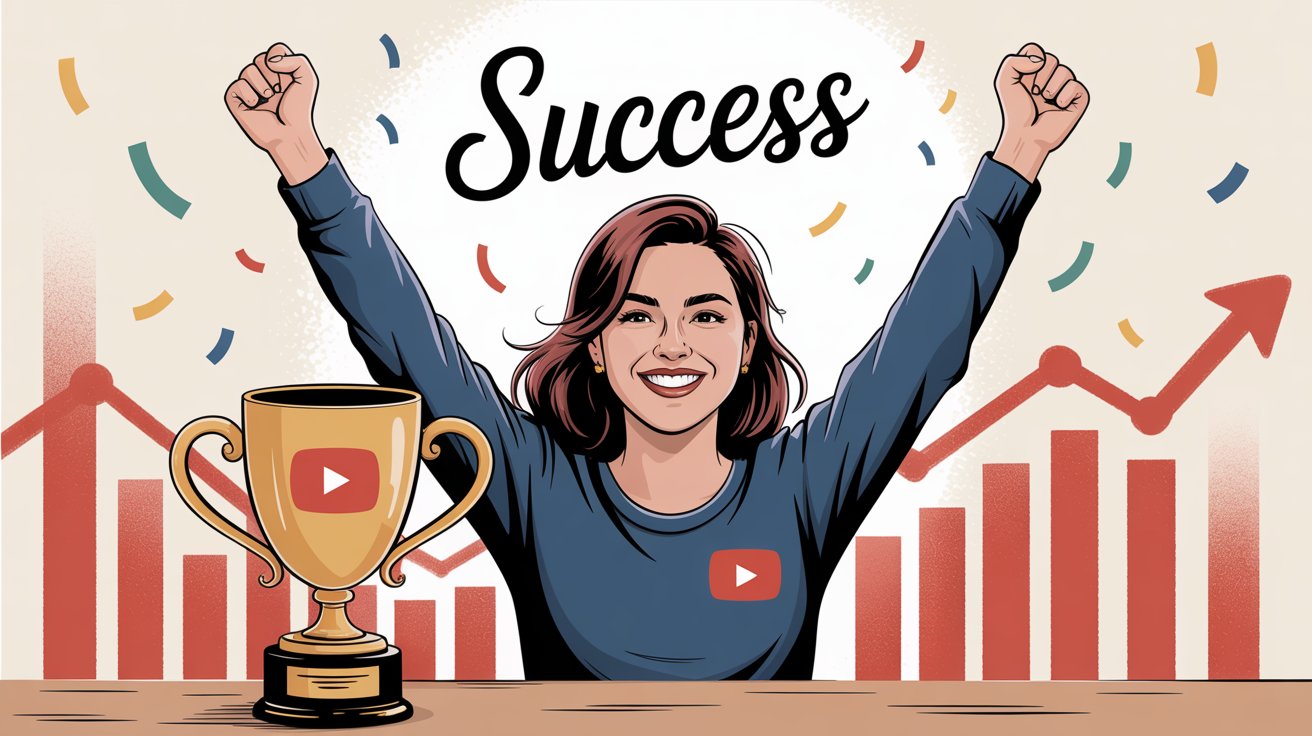
Final Thoughts: Mastering the Youtube Shorts Algorithm in 2025
The YouTube Shorts algorithm in 2025 is sophisticated, but its goal is simple: show people content they'll enjoy watching.
It measures enjoyment through watch time, replays, likes, and shares. Shorts that hook viewers immediately, hold their attention, and inspire interaction get promoted. Those that don't get buried.
For creators, the challenge is consistently delivering engaging content in a tight time frame. There are no shortcuts or hacks. You have to win over real viewers with genuinely valuable or entertaining content.
YouTube provides increasingly detailed analytics to help you understand what's working. Dive into your Shorts analytics to study retention graphs, viewed-vs-swiped rates, and engagement stats. These data points are the algorithm speaking to you, telling you why it pushed or didn't push your video.
The algorithm is always evolving, but the fundamentals haven't changed: viewer satisfaction drives everything. The 2025 updates (view counting changes, 3-minute limit) don't alter this core truth.
If you apply the tactics from this guide (nailing hooks, maximizing retention, aligning with viewer interests, encouraging engagement, and posting consistently), you'll stack the deck in your favor.
YouTube Shorts offers one of the fastest paths to reach massive audiences right now. The algorithm will do the heavy lifting of finding your viewers, as long as you deliver content they can't stop watching.
Want to track all these metrics effortlessly and spot what's actually working? Try Shortimize free for 7 days and see your Shorts performance across all platforms in one place.
Now go create something great. Your next Short might be the one that reaches 10 million people. 🚀
